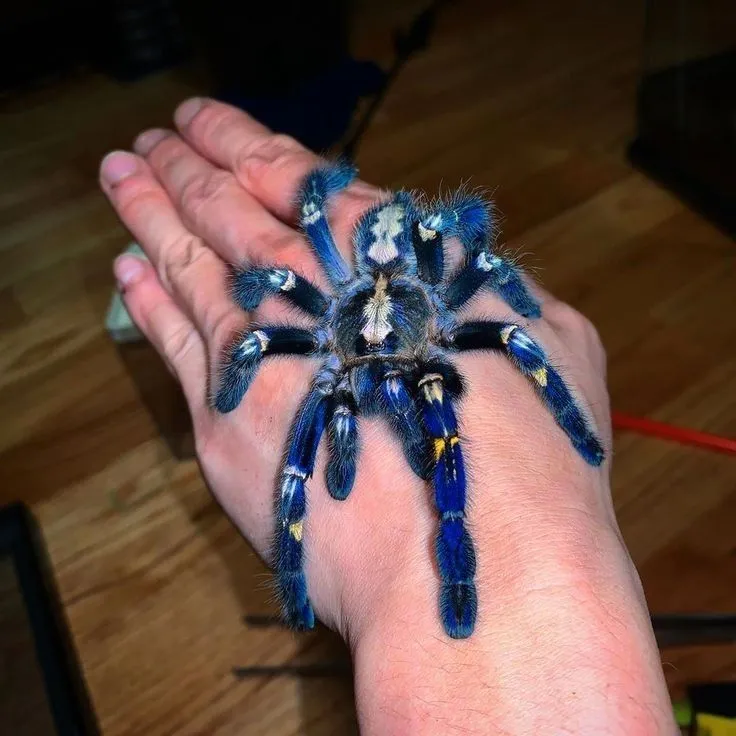What is a Sapphire Peacock Tarantula?
The Sapphire Peacock Tarantula (Poecilotheria metallica) is a captivating arboreal tarantula species, native to a specific region of India. Its striking appearance, characterized by a metallic blue and yellow coloration, has made it a sought-after pet among tarantula enthusiasts. This species is known for its unique beauty and, like all tarantulas, plays a vital role in its ecosystem. Understanding the Sapphire Peacock Tarantula involves appreciating its habitat, behavior, and the care it requires to thrive. These fascinating creatures offer a glimpse into the diverse world of arachnids, highlighting the importance of conservation and responsible pet ownership. Their delicate beauty and intriguing behaviors draw attention, making them a subject of fascination for both experts and novices alike.
Appearance and Characteristics
The Sapphire Peacock Tarantula is renowned for its stunning coloration. The body is primarily a metallic blue, contrasted by yellow markings on the legs and carapace. This vibrant coloration is not just visually appealing but also serves as a form of camouflage within its natural environment. The spider’s size can vary, with females typically being larger than males. They possess large fangs (chelicerae) used for both prey capture and defense. The body is covered in small hairs called setae, which play a role in sensory perception and defense. These hairs can sometimes be irritating to human skin. The overall appearance of the Sapphire Peacock Tarantula is truly remarkable, setting it apart from many other tarantula species and making it a prized specimen among collectors.
Size and Lifespan
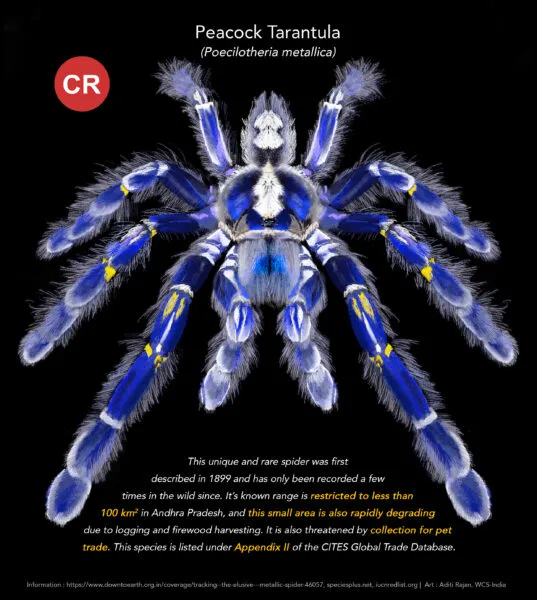
The size of a Sapphire Peacock Tarantula varies with age and sex. Females typically grow to around 7-8 inches in leg span, while males tend to be slightly smaller. The lifespan of these tarantulas also differs between sexes. Females can live for 10-12 years or even longer under optimal conditions, while males have a much shorter lifespan, usually only living for 2-3 years after reaching maturity. The lifespan is affected by several factors, including diet, environmental conditions, and overall health. Proper care, including a balanced diet and a suitable habitat, is crucial for maximizing the lifespan of these beautiful creatures, ensuring they thrive for as long as possible. A healthy environment allows them to grow and molt successfully, contributing to their longevity.
Unique Sapphire Coloration
The Sapphire Peacock Tarantula’s brilliant blue coloration is a key distinguishing feature. The metallic sheen results from the structure of its hairs and the way they reflect light. This iridescence varies in intensity depending on the light source and the spider’s age. The blue often becomes more pronounced as the tarantula matures. This unique coloration isn’t just for show; it may also play a role in attracting mates or camouflaging the spider in its arboreal habitat. This stunning feature makes the Sapphire Peacock Tarantula one of the most visually appealing tarantula species. The specific shades and patterns can vary slightly between individual spiders, adding to their unique appeal and desirability among enthusiasts.
Where Do They Live?
Natural Habitat and Range
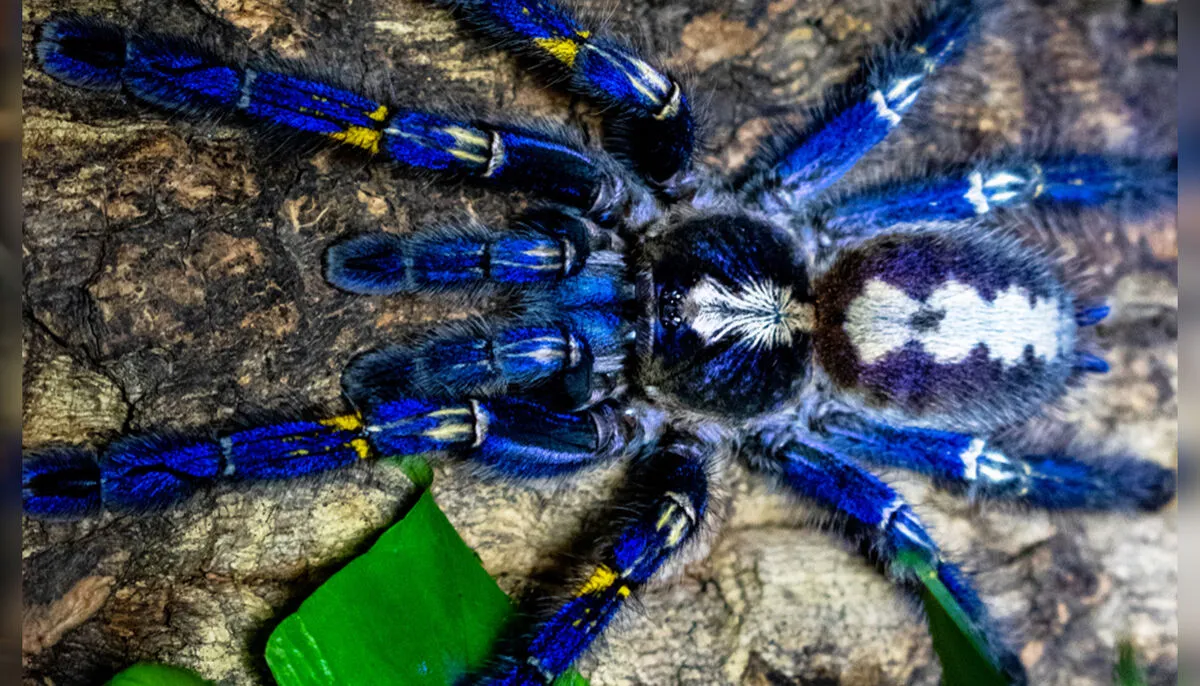
Sapphire Peacock Tarantulas are native to a specific, relatively small area within the Eastern Ghats of Andhra Pradesh, India. They are typically found in the canopies of trees within deciduous forests. The habitat is characterized by a tropical climate with high humidity and temperatures. These spiders are adapted to living in the upper canopy, using their strong claws to grip tree bark and build silken retreats. Deforestation and habitat loss are significant threats to the species, reducing its natural range and impacting its survival. Conservation efforts are therefore critical to protect this unique tarantula and its delicate environment. Understanding their specific habitat needs is essential for both conservation and responsible pet ownership.
Burrowing and Webbing Behavior
Unlike many tarantula species, the Sapphire Peacock Tarantula is arboreal, meaning it lives in trees. They do not burrow but instead create silken retreats within tree hollows or under loose bark. These webs serve as shelters and are used to ambush prey. Their webbing is not as extensive as some other spider species, but it is strong and functional. The spiders will often construct a silken tube-like retreat where they spend most of their time, venturing out to hunt or when they are ready to molt. These behaviors are crucial for their survival, providing protection from predators and the elements while also aiding in their hunting strategy. Observation of these behaviors in captivity provides insights into their natural adaptations.
Diet and Feeding Habits
What Do They Eat?
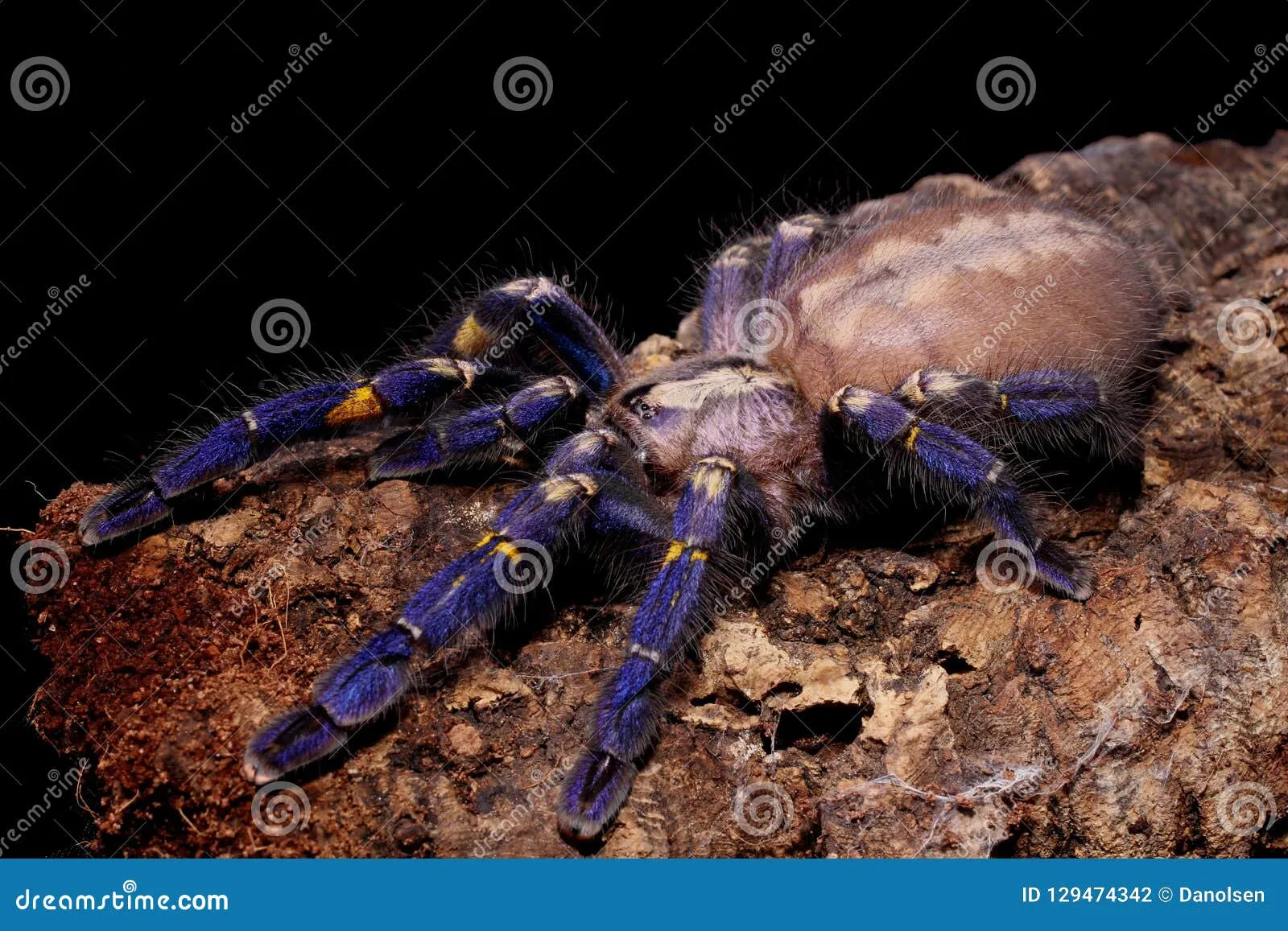
Sapphire Peacock Tarantulas are carnivorous, feeding primarily on insects in the wild. Their diet includes a variety of prey, such as crickets, cockroaches, beetles, and other invertebrates that can be found in their arboreal habitat. They are ambush predators, waiting for their prey to come within striking distance before launching a swift attack. In captivity, their diet can be easily replicated by feeding them appropriately sized insects. A varied diet helps ensure that the tarantula receives all the necessary nutrients for growth and health. The size of the prey offered should correspond to the size of the tarantula, avoiding food items that are too large or too small.
Feeding Frequency and Techniques
The feeding frequency of a Sapphire Peacock Tarantula varies depending on its age and size. Younger tarantulas typically require more frequent feeding, about twice a week, while adults can be fed once or twice a week. It is important to remove any uneaten food within 24 hours to prevent mold or mite infestations in the enclosure. The size of the prey should be appropriate, ideally being no larger than the spider’s body. Overfeeding can lead to obesity, while underfeeding can affect the spider’s growth and overall health. Providing fresh water in a shallow dish is also crucial for hydration. Observing the spider’s feeding response will help determine the appropriate amount of food to offer.
Temperament and Handling
Are They Venomous?
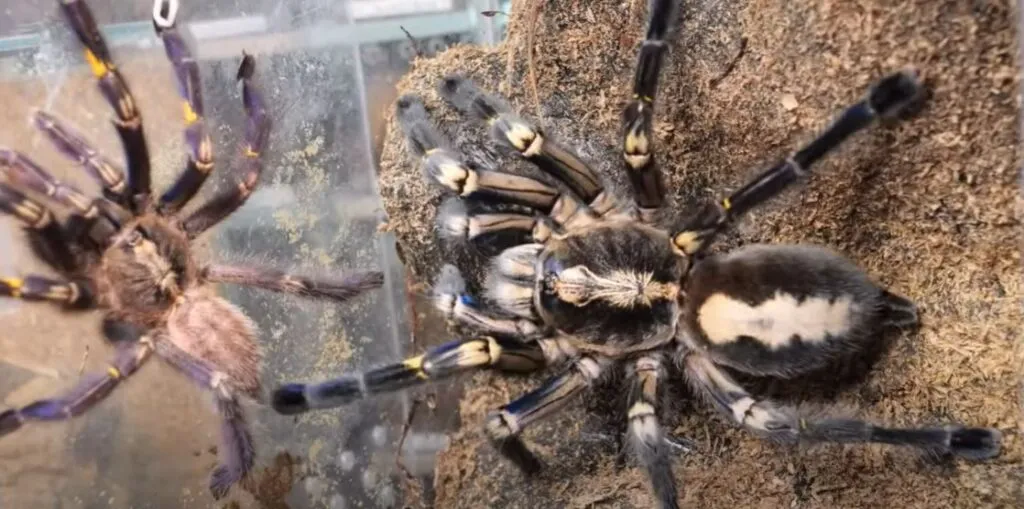
Like all tarantulas, the Sapphire Peacock Tarantula is venomous, but their venom is generally not considered lethal to humans. The effects of a bite are typically similar to a bee sting, causing local pain, redness, and swelling. However, individual reactions can vary. Allergies are possible. Therefore, caution should always be exercised when handling them. Although bites are rare, responsible handling practices are essential. It is important to understand that these spiders are not aggressive, and bites usually occur as a defensive response when they feel threatened or startled. Always prioritize the spider’s well-being and handle them with respect, avoiding unnecessary stress.
Handling Precautions
Handling a Sapphire Peacock Tarantula is generally not recommended due to their speed and potential for bites. If handling is necessary, it should be done with extreme caution and preferably only by experienced keepers. Always handle the spider over a soft surface, such as a bed or a mat, to minimize the risk of injury if it falls. Avoid sudden movements and loud noises, as these can startle the spider. Use a soft paintbrush to gently encourage the spider to move if necessary, but avoid direct contact. Wash your hands thoroughly after handling to remove any potential irritants from the spider’s setae. Always respect their space and avoid any actions that could cause them stress.
Conservation Status
Threats to Their Survival
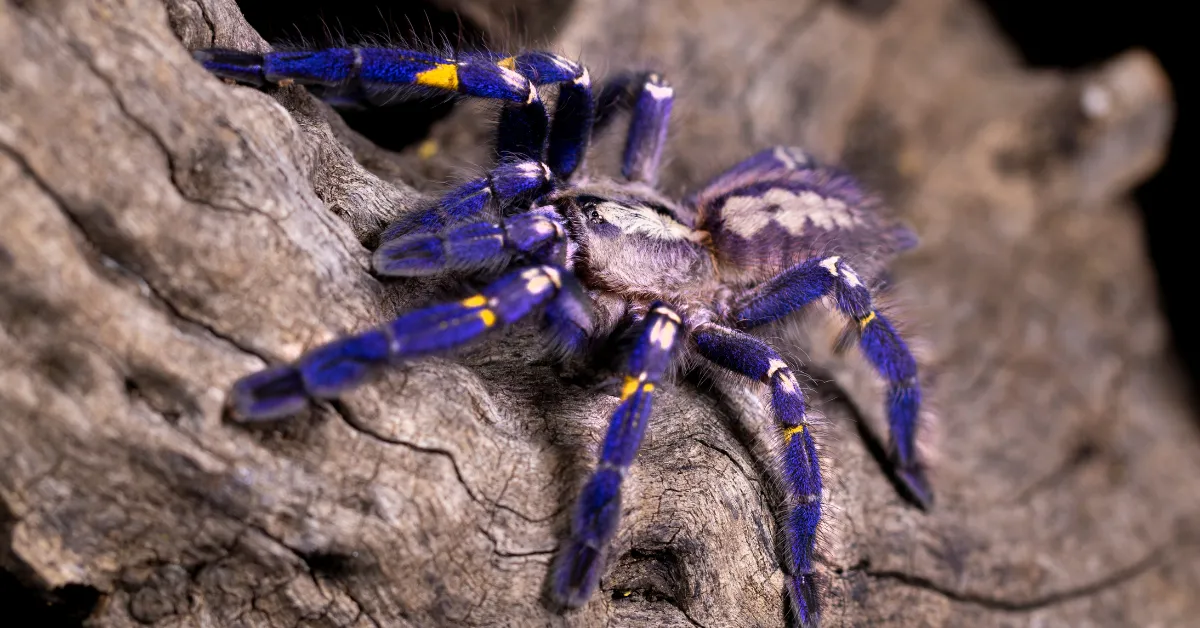
The Sapphire Peacock Tarantula faces several threats in the wild, primarily habitat loss due to deforestation, agricultural expansion, and urbanization. This destruction of their natural habitat leads to a decline in their populations. The pet trade, while not as significant a threat as habitat loss, can also contribute to their decline if collection is not sustainable. Climate change and its effects on their environment could pose additional risks. Conservation efforts, therefore, are crucial to protect this species. Protecting their environment is very important. Understanding and addressing these threats are essential for the long-term survival of the Sapphire Peacock Tarantula in its native habitat.
Importance of Habitat Preservation
Habitat preservation is critical for the Sapphire Peacock Tarantula’s survival. Protecting the forests where they live ensures they have a place to thrive, with access to food, shelter, and suitable environmental conditions. Conservation efforts, such as establishing protected areas and promoting sustainable land use, are vital. Supporting organizations dedicated to habitat preservation is another important way to contribute. Raising awareness about the importance of biodiversity and the threats facing these unique creatures is also critical. By preserving their habitat, we can help ensure that future generations can appreciate the beauty of these magnificent tarantulas in their natural environment. This also involves community engagement and participation in conservation efforts to ensure their long-term sustainability.
Interesting Facts and Trivia
The Sapphire Peacock Tarantula, despite its striking appearance, has some intriguing facts. It is one of the fastest-growing tarantula species. They are also known for their defensive behavior, including flicking urticating hairs from their abdomen. They are highly prized by tarantula enthusiasts due to their beauty and rarity. The species’ name, ‘metallica,’ refers to its metallic coloration, reflecting its brilliant blue hue. These unique characteristics make them a fascinating subject of study and a captivating species to observe in captivity. Their molting process reveals even brighter colors. Understanding these trivia facts adds to the appreciation of this incredible species.
